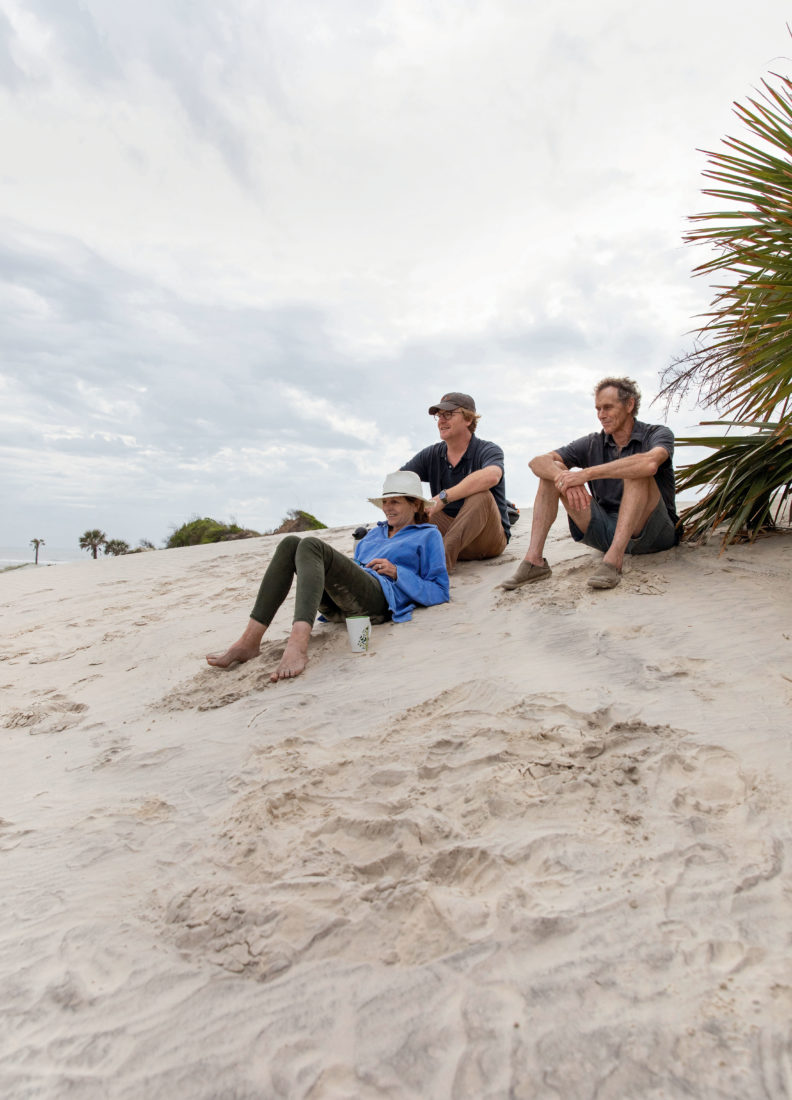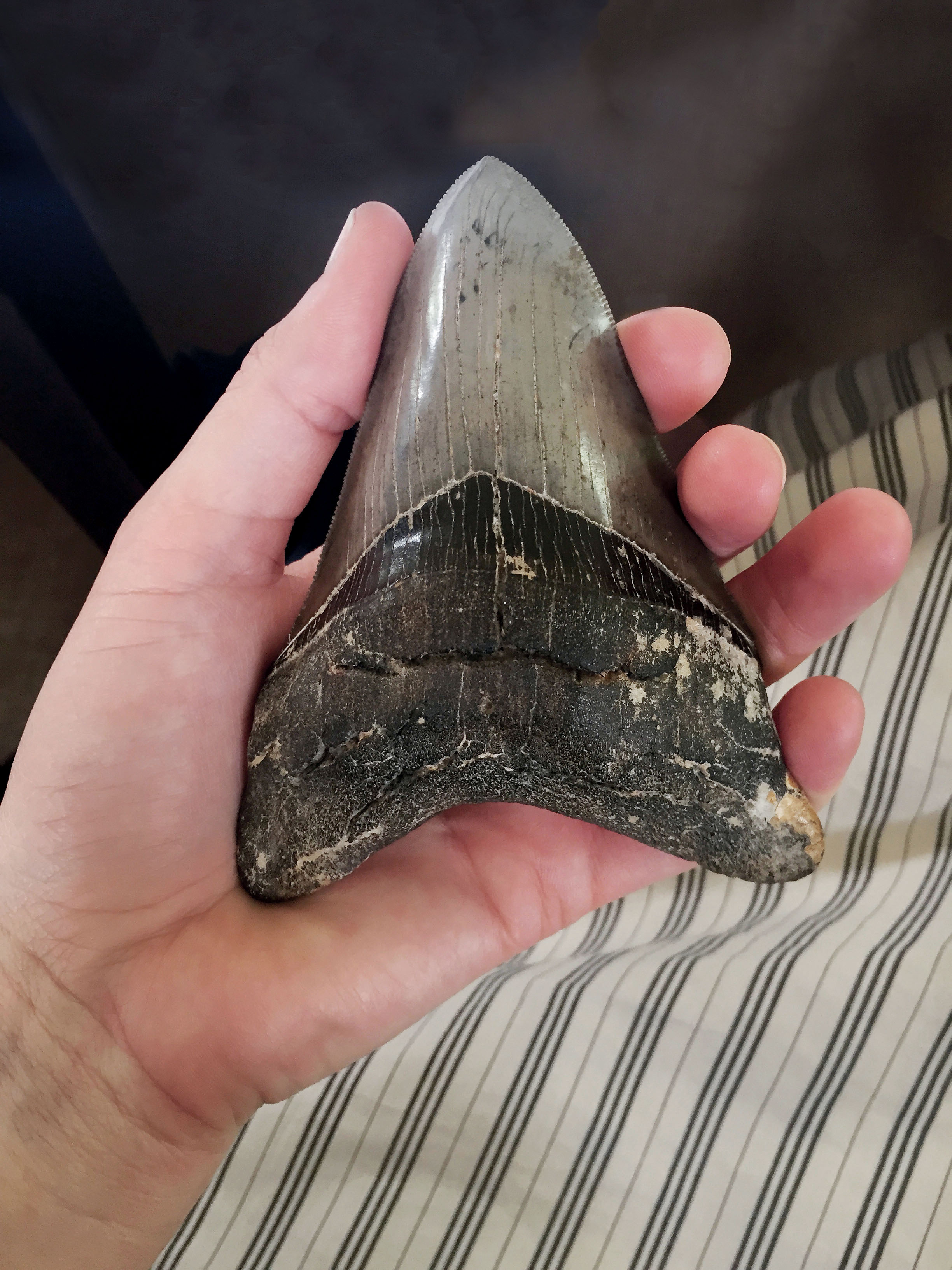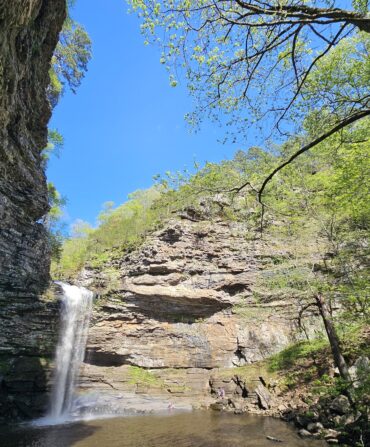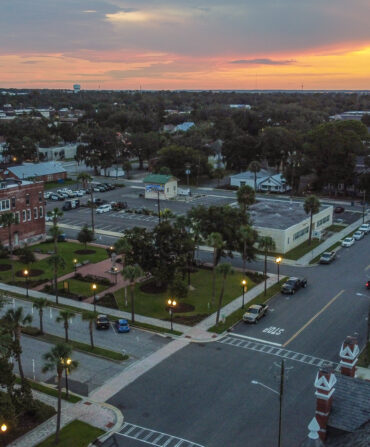Growing up a river rat in coastal Georgia, I was a student of all of the state’s fifteen barrier islands, but the wildest ones enthralled me most. Even their names seemed to conjure adventure—Ossabaw, Blackbeard, Wassaw (where I left plenty of tracks in the sand), St. Catherines, Sapelo, Wolf, and the crown jewel, Cumberland. At eighteen miles long, it is the largest of the islands and was once primarily owned by the Carnegie family, of steel and philanthropy fame. Here there were remains of forts, mansion ruins, wild horses—the stuff of a young explorer’s dreams.
I first visited the island when I was fifteen. And though that was just a day trip, I’ve never forgotten the sheer scope of the maritime forest, with live oaks carpeted in resurrection fern as deep as I could see, and a beach so covered with shells the idea of walking on it seemed like a sin.
Recently I returned with my wife, Jenny, at the invitation of Gogo Ferguson, a fifth-generation islander and descendant of the Carnegies. Ferguson, who designs jewelry inspired by the island’s flora and fauna, couldn’t get lost on Cumberland if she was blindfolded. Within minutes of our arrival, we were in a pickup truck zooming through a tunnel of oaks on our way to the beach. Every curve, hump, and tumbledown structure seemed to spark a story, whether about the gator that once grabbed a cousin by the waist (he survived) or the Scottish golf pro who came to the island in 1900 to help build a nine-hole course. At some point he decided to jump on a wild horse, and said steed gave him a swift kick to the head (he did not survive).
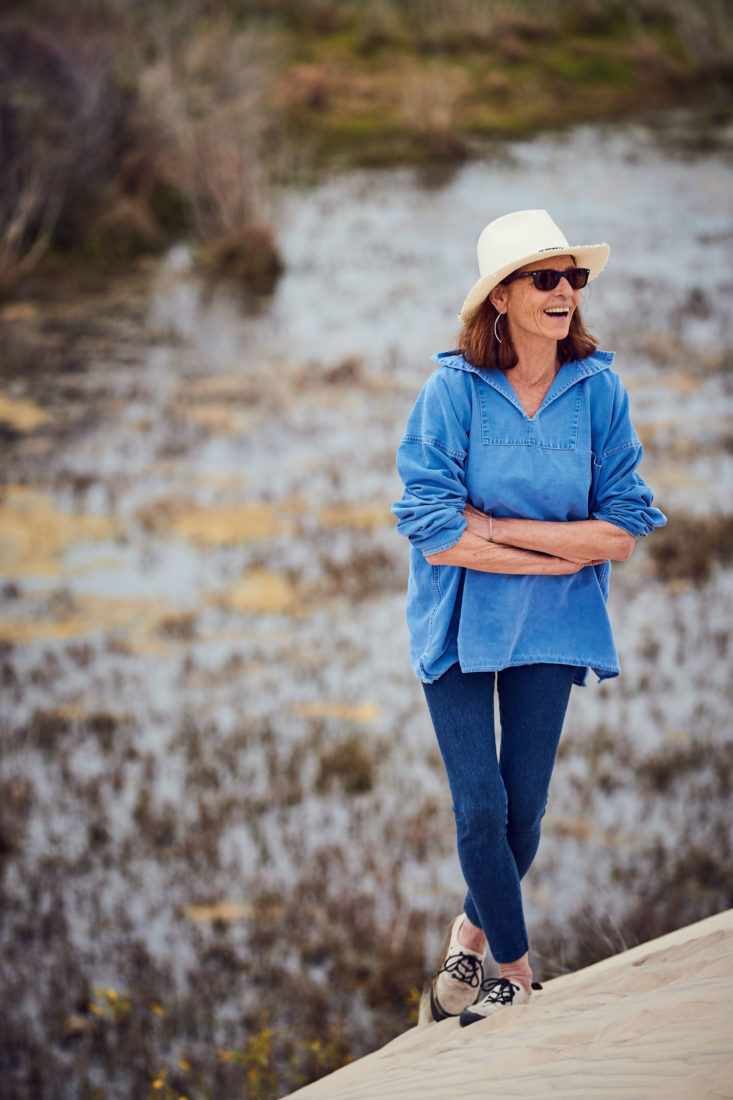
Photo: William Hereford
Gogo Ferguson.
After our brief tour, we ambled down to Greyfield Inn (which you can read more about in our “Classic Weekend Escapes” feature beginning on page 101). Before it started welcoming guests, the inn served as a Carnegie family home. It’s now run by Gogo’s brother Mitty and his wife, Mary. The house is very much the way it was when Gogo was growing up, including the hash marks on the wall tracking the height of generations of Carnegies. We grabbed a drink and slurped a few oysters before sitting down beneath the oaks for dinner.
Gogo and her husband, Dave Sayre, built their nearby house twenty-six years ago mainly from recycled lumber that had washed up on Cumberland’s shores. To walk through the doors is to take a natural-history lesson in what feels like a ship moored in a coastal forest. Weathered shelves, some bearing the pockmarks of sea worms, sag beneath shark teeth, fossils, Native American pottery, and bird skulls. A mobile made of whale vertebrae hangs from the ceiling. In the morning we woke with the sun and soon found ourselves perched atop a thirty-foot dune, looking toward the maritime forest. Before long, two massive feral hogs emerged with little ones in tow, and glossy ibis and wood storks alit in a patch of wetlands just below us. As the light shifted, we sat there entranced by the scene, no need to speak. We stayed until we risked missing the ferry. At the house, we quickly plucked some oranges and lemons off the citrus trees in an attempt to bring a small part of the island home with us. Those would soon disappear, but the memories won’t.
David DiBenedetto
Senior Vice President & Editor in Chief
@davedibenedetto


